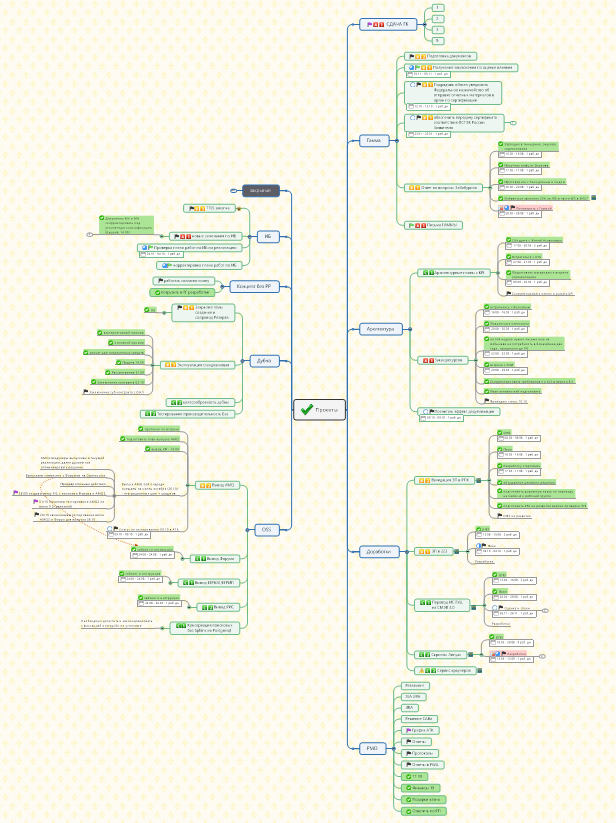How intelligence cards help IT-projects
In continuation of the article on time management , published earlier in the blog LANIT, I bring to your attention the story about your experience of using the tool for working with intellect cards. For the last ten years I have been involved in project management in IT and telecom, and all this time I have been using MindJet MindManager. Today I will tell you how it can be used to organize project tasks and everything that happens in the head of a project manager. I hope that you will read this article while you are drinking one cup of coffee, and for the next few we will discuss it.
From this post you will learn about the principles of the formation of mind maps, the main features of MindJet MindManager (hereinafter - Mind) and the features of its use in the project work of a manager.
I did not want to turn this article into a manual or user manual. Do not judge strictly, but the information below is really effective, and I want to share it with you.
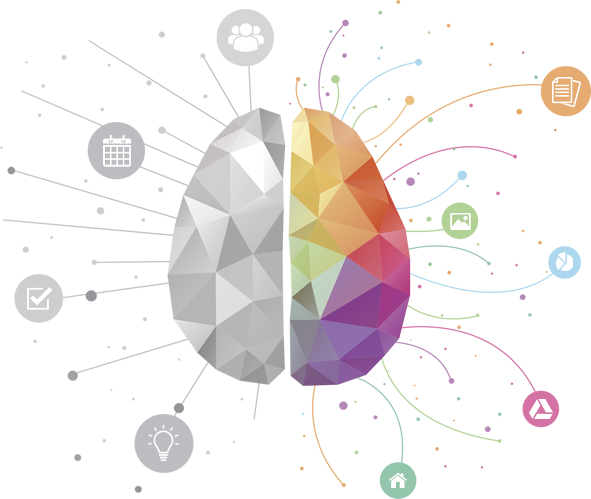 A source
A source
For those who do not know what an intelligence card is, and just for aesthetic pleasure, I suggest starting with the beautiful Leonardo da Vinci mind map found on the Internet. I think something like that was in the head of a great Italian.

Mind management is a technology of providing information in a form that requires minimal time and psycho-physiological resources for searching, analyzing and understanding information.
Presentations, terms of reference, requirements gathering, plans, concepts, activity prioritization, project and family budget budgeting, a list of tasks for a short and long perspective, note-taking of interesting books - for all these activities I used mind maps at one time or another.
The main principle of mind maps is a convenient form of presenting information for further work with it. In my projects, Mind still remains the main tool for systematizing information. A year ago I conducted a master class for my colleagues from LANITon this topic. A little insider, what I talked with them about and advised you will find in this article.
The clear profit from Mind for me is the following:
The main idea of conducting a project through an intelligence card is integrated planning with the possibility of removing key information components from the map without deep immersion in it (statuses, criticality, delays, bones, and so on). Intellect cards allow to increase the efficiency of the brain through the use of two hemispheres at once: the left hemisphere, responsible for logic (through structural chaos), and the right hemisphere, responsible for emotions (through visualization of information, “coloring” the intellect map, etc.) P.).
For a better perception of mind maps, it is necessary to change your thinking and approach to information processing. About this in order.
This is how the “battlefield” of my real project could look like. Please note that you can detect problem areas without additional effort.
There are dozens of programs and online services that will help you create a mind map. Even more on the network of various reviews and ratings of the best applications (for example, in the article " What should I draw a MindMap? A detailed overview of the 6 most popular mindmap drawing programs "). The most popular are Free Xmind and Freemind. The set of functionality is small, but they are suitable for simple work with intelligence cards.
One of the most popular programs for professionals when working with mind maps is Mindjet MindManager. Although this is not the cheapest tool (the product costs 25,000 rubles), but with the ability to upgrade from older versions at a lower cost. The program is not just leading in the corporate sector. Here are its key features:
In the latest versions of the program, new chips have appeared. Here are the main ones.
Despite the soundness and popularity of the program, there are disadvantages in it, and for me it is only one - the “Browser”. Absolutely inconvenient for browsing the web pages, built into your mind map, offers to open all the links in it.
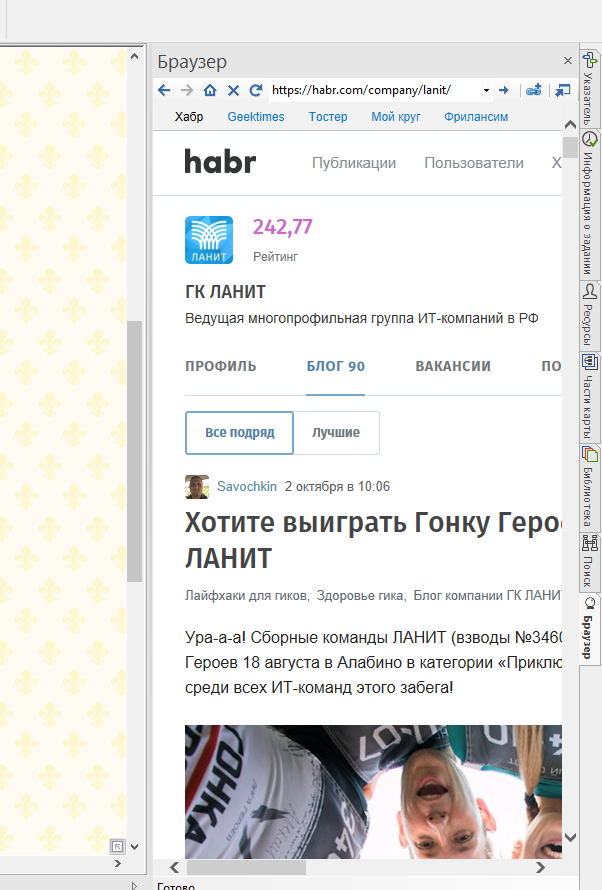
But to eliminate this sadness from your life there is an opportunity to open links in third-party browsers. See below:

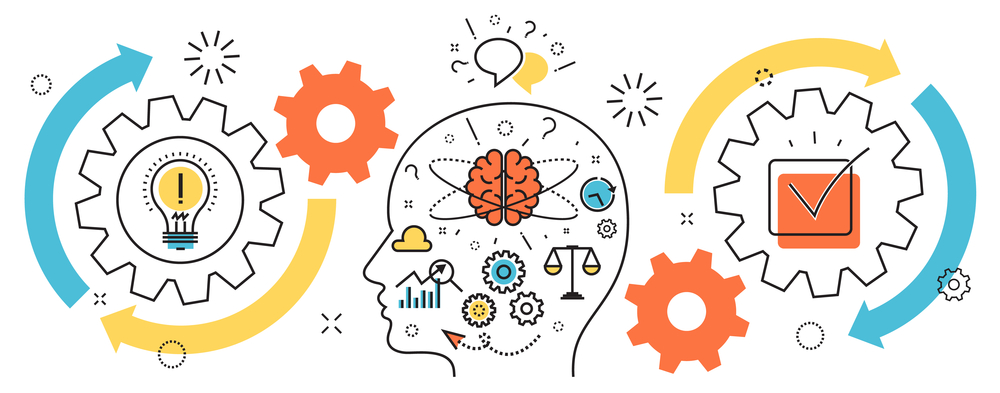
Below I will give the main elements of the tool, often used in my work, and will give some tips.
To set priorities, there are separate markers for tasks in the toolbar on the “Task” tab; they do not fully reflect my needs. To work within the Eisenhower matrix, I use a double gradation - alphanumeric.
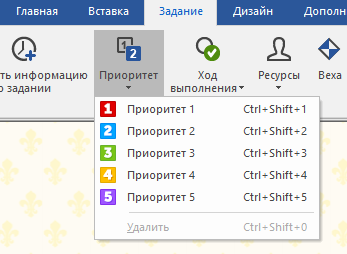
Alphanumeric designation can be added through the context menu of the task. The menu will highlight in the section "common icons" the most frequently used identifiers - my "favorite", according to Mind.

In addition to the above, I use the flag system: - I
 create task marks with a purple flag, which need to be done today with the involvement of other specialists / additional resources, with a
create task marks with a purple flag, which need to be done today with the involvement of other specialists / additional resources, with a
 green flag - completely autonomous tasks that I can close myself, without engaging anyone,
green flag - completely autonomous tasks that I can close myself, without engaging anyone,
 with black ones - that need to be done then.
with black ones - that need to be done then.
Every day, I review all the flags for their relevance and transfer to the purple / green category.
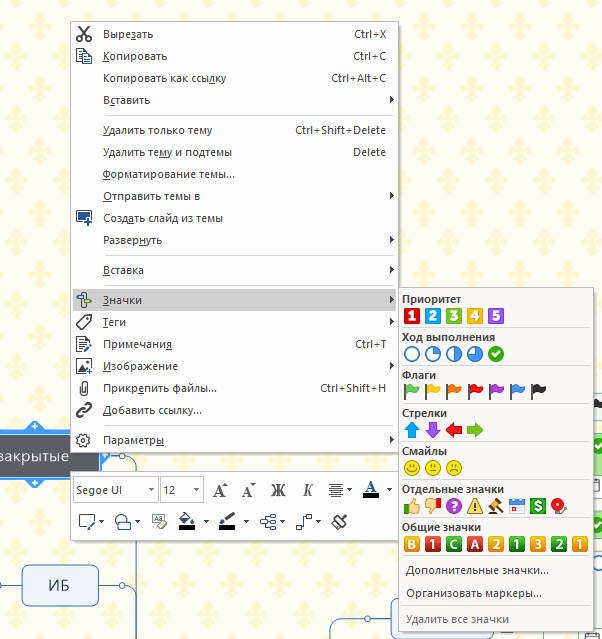
Visually, the tasks are as follows:

At any element of the map, you can add the performance control feature - deadlines and those responsible. If the deadlines pass, and the task is incomplete, the task will be highlighted in red, and it will be easy to identify this failure. Their installation takes place all the same on the toolbar in the “Task” tab and through the context menu. You can set the periods of execution of tasks, and the progress of their execution. Resources will be reflected in the Gantt chart, taking into account the configured possible load. It looks like this (the task is automatically highlighted in red):
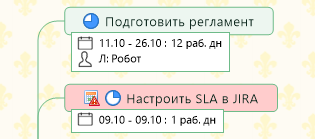
You can add unique properties of different formats to tasks. It is these properties that can then be used in the calculation of formulas (more on that later), but I most often use such properties as the cost of production and labor costs of execution. After summing them up according to the areas of activity of my project, I see a comprehensive picture of the costa on the project.
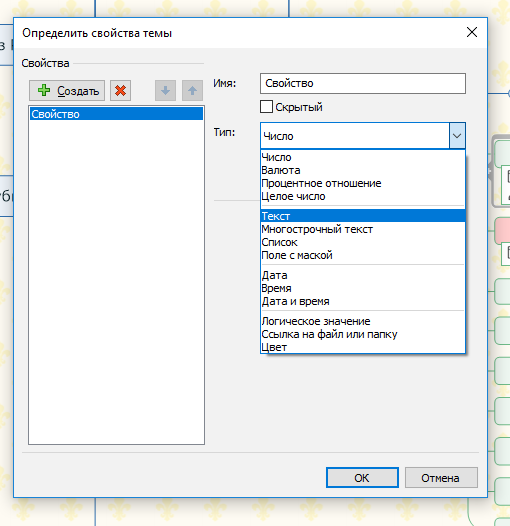
This is one of the most requested features. Allows you to perform calculations inside the map, the result to give exactly where you need it - in the pre-configured property of the problem. Simple mathematical formulas are used, the syntax is much simpler than in Excel. To specify the formula, a special field appears in the interface (see below).
Functionality allows you to consider the properties of the child tasks of the tasks of the "parents", thereby aggregating the values at the levels above. Example below:

From Mind, it is possible to export information in different formats, and quite flexibly:
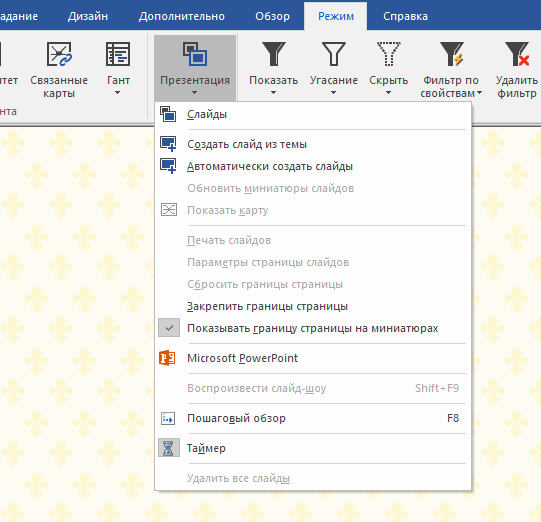
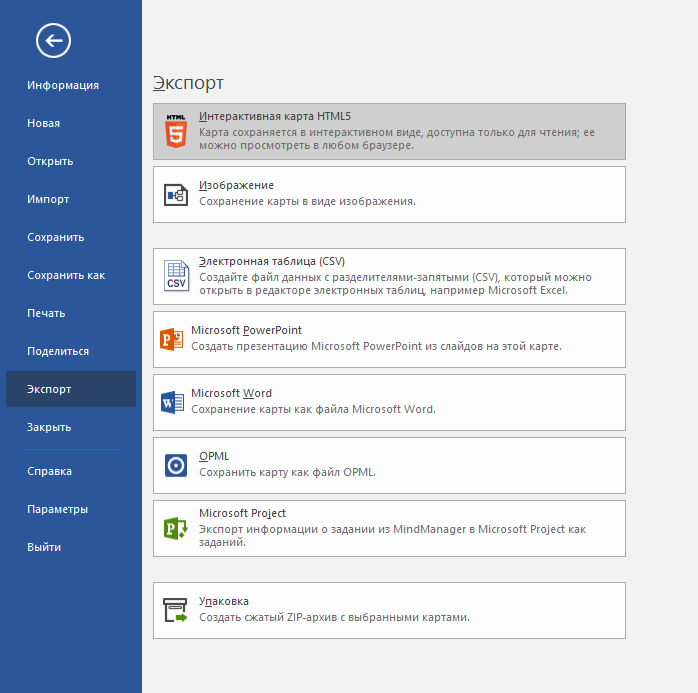
As in any other drag'n'drop tool on the map, you can drag the necessary documents for quick access to them (OneNote is remembered). At the same time, you will be asked whether you want to use the link to navigate through it in the future or use the standalone option with the file attachment to the map. Pictures can be immediately inserted into the elements for greater clarity. You can add external links to your map, for example, to project resources or important articles on the Internet. This approach is convenient to use when planning long-term trips.

Links are opened in the built-in browser, which was mentioned earlier.
Another option for using mind maps is an interactive map of your project documents. When there are many projects, it is convenient to keep all the key links to project folders, estimates, graphs, reports and presentations, and other mind maps. Truly central to the project.
The tool allows you to follow the basic three rules of brainstorming

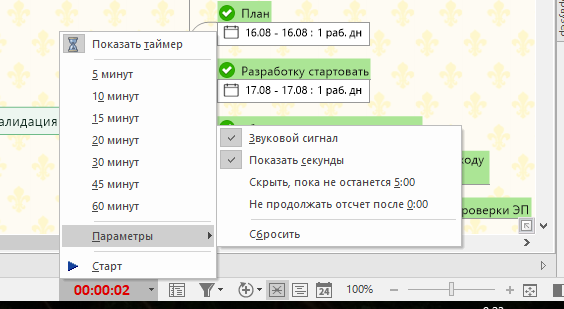
You can choose from several types of displaying filtering results - “hiding” (for example, hiding all future tasks with a date greater than the current month), “displaying” (for example, displaying priority 1 only), and “extinction” (cited above in recent updates). .
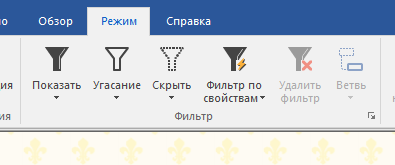
Filtering is also applied by parameters, allowing you to filter by any established parameter type, style, text, and information by task, resource, and also select how the filter results are displayed.
I use customized and pre-stored filters by performance flags - “black flags” (tasks for the future) and “other flags” (tasks for today). This allows you to focus only on what is needed on a given day. An example is below.

For each project, I recommend keeping a separate map and applying the recommendations given by me to each of them. And if you have a lot of projects, it is convenient to use the master map as an intermediate hub to navigate all other projects.
My mind map is always open either on the second monitor or in the background. Its actualization does not require much time, if you work with it constantly.
There are periods of time when it needs to be reconsidered comprehensively and systematically - these are viewing platforms (see my article on time management ), in which we plan our activities for the day / week / month, record the completed activities (by moving to the “Completed” section, it is he who at the beginning of the article is highlighted in black). As a result, there should be no sections of the map in which there are no unfulfilled activities, and the main theme is not placed in the “Completed”. If this happens, the task is simply not placed in the “Completed” (you simply forgot) or not completed (you simply have not planned any further activities): you need to perform an activity / get a result that is not listed in the map, and it follows add and plan.
Intellect cards can be used without IT tools. Their beautiful and visual visualization is used in scribing, allowing the visualizer to fully express itself and convey information to the listener. Such intelligence cards are less reliable for storage and less transportable, less scalable and changeable.
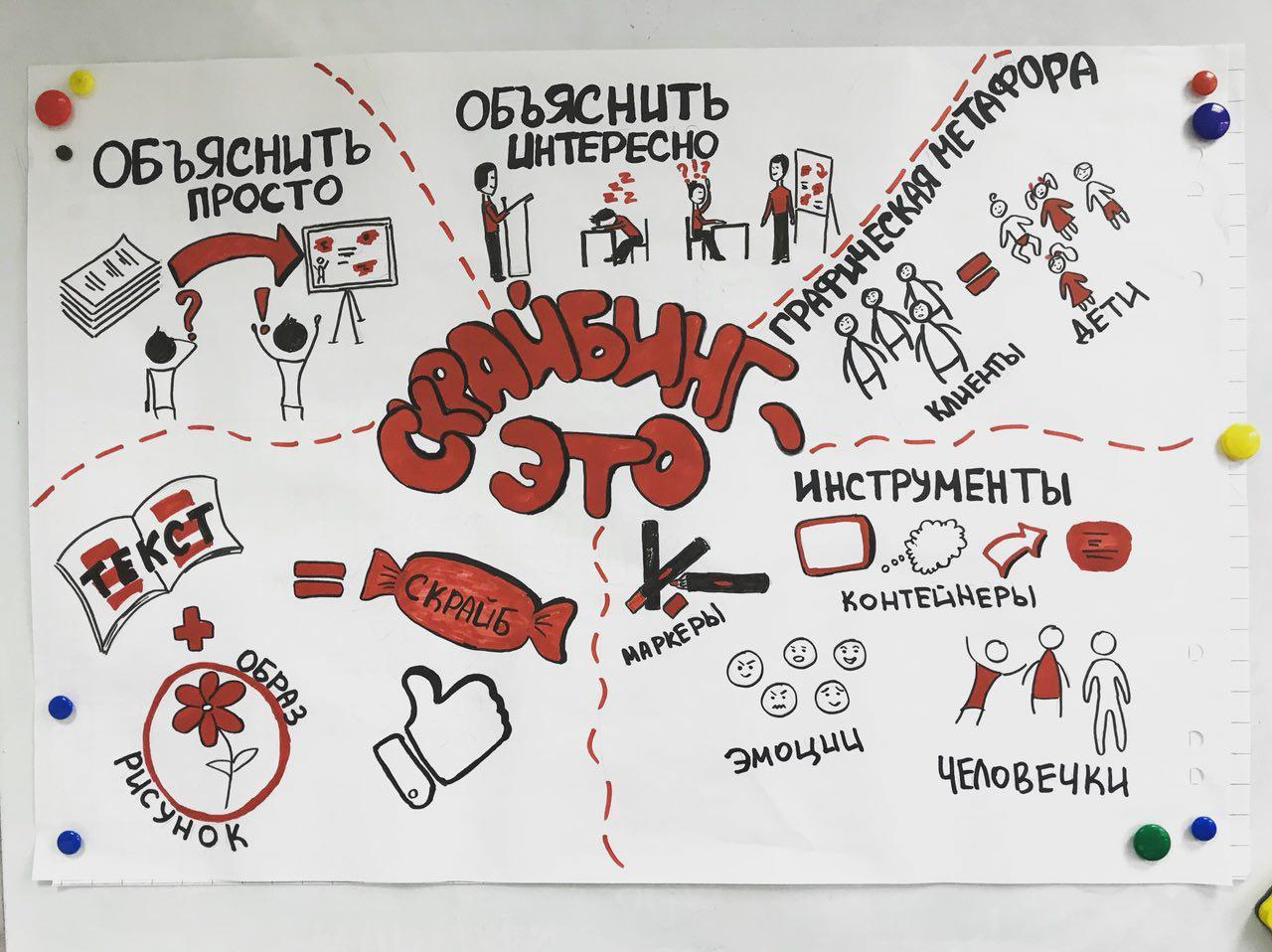 Source
Source
For me, the mind map is the basis of the working day, clearly showing the situation on the project. What about you? What tools do you use? Maybe trackers, task managers, mind maps, reminders, tudu lists, or other tools that make your work and life more effective? I invite you to share experiences.
By the way, the whole mechanics of thinking and human physiology is given in one good article, perhaps previously read by you. Tyts .
From this post you will learn about the principles of the formation of mind maps, the main features of MindJet MindManager (hereinafter - Mind) and the features of its use in the project work of a manager.
I did not want to turn this article into a manual or user manual. Do not judge strictly, but the information below is really effective, and I want to share it with you.

For those who do not know what an intelligence card is, and just for aesthetic pleasure, I suggest starting with the beautiful Leonardo da Vinci mind map found on the Internet. I think something like that was in the head of a great Italian.

Mind management is a technology of providing information in a form that requires minimal time and psycho-physiological resources for searching, analyzing and understanding information.
Presentations, terms of reference, requirements gathering, plans, concepts, activity prioritization, project and family budget budgeting, a list of tasks for a short and long perspective, note-taking of interesting books - for all these activities I used mind maps at one time or another.
The main principle of mind maps is a convenient form of presenting information for further work with it. In my projects, Mind still remains the main tool for systematizing information. A year ago I conducted a master class for my colleagues from LANITon this topic. A little insider, what I talked with them about and advised you will find in this article.
Profit!
“Rabbits are not only valuable fur,
but also three or four kilograms of dietary, easily digestible meat.”
Vladimir Pertsov
The clear profit from Mind for me is the following:
- Effective start of my work day. “Viewpoints” (for those who do not know, see my article on time management ), conducted by me in the mornings, start with working with mind maps in Mind. It allows you to develop your own approach to managing tasks and focus on the day / week. I feel that saving a day is about 20 minutes (100 minutes a week, 400 minutes a month, 4800 minutes a year or two 40-hour work weeks a year) + no lost tasks, which is equally important.
- Flexibility in managing tasks. Tasks have clear visual priorities, the ability to change priorities on the fly, changes and control of the timing of tasks, assignment of responsible ones - and that’s not all. All of our beloved OneNote, Evernote, Todo-list smokes aside.
- The transparency of my projects at any given time. I use for this visualization and principles of the Eisenhower Matrix.
- All documents and links in one place. Always on hand "project plan" budgets, tasks jira, project folders and sites.
- Achieve personal goals. Intellectual cards are also effective in personal life: for planning purchases, conducting a SWOT analysis, planning trips and focusing their priorities on different periods.
- Simple use. The main controls are the keyboard arrows, the Enter and Insert buttons. Adding elements to the map occurs in a fraction of seconds, and the transfer of elements and their entire structure to the map is done with a slight movement of the mouse.
How to apply the mind map and move on to the appropriate mindset.
The main idea of conducting a project through an intelligence card is integrated planning with the possibility of removing key information components from the map without deep immersion in it (statuses, criticality, delays, bones, and so on). Intellect cards allow to increase the efficiency of the brain through the use of two hemispheres at once: the left hemisphere, responsible for logic (through structural chaos), and the right hemisphere, responsible for emotions (through visualization of information, “coloring” the intellect map, etc.) P.).
For a better perception of mind maps, it is necessary to change your thinking and approach to information processing. About this in order.
- First you need to unload your head, bring extra information into the intellect map - visualize chaos. For now, let only the most necessary things be made for making operational decisions.

- We structure the resulting chaos by grouping according to similar parameters.

- Decomposing the structure to the tasks and arranging connections between them.
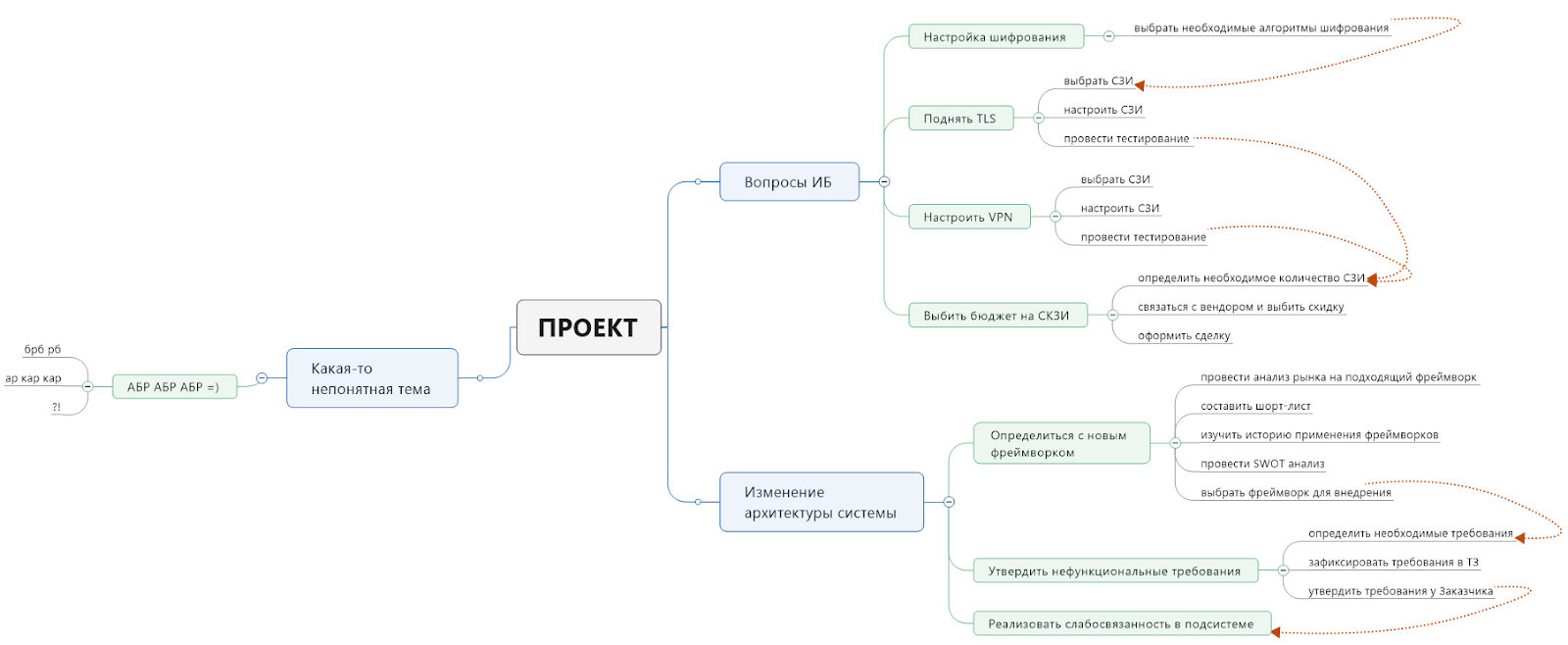
- We set priorities.

This is how the “battlefield” of my real project could look like. Please note that you can detect problem areas without additional effort.
In fact, the real intellect cards of the project are so large that they do not fit in a readable format on one screen, in which case you need to use filters, here I’m giving a very truncated fragment
There are dozens of programs and online services that will help you create a mind map. Even more on the network of various reviews and ratings of the best applications (for example, in the article " What should I draw a MindMap? A detailed overview of the 6 most popular mindmap drawing programs "). The most popular are Free Xmind and Freemind. The set of functionality is small, but they are suitable for simple work with intelligence cards.
One of the most popular programs for professionals when working with mind maps is Mindjet MindManager. Although this is not the cheapest tool (the product costs 25,000 rubles), but with the ability to upgrade from older versions at a lower cost. The program is not just leading in the corporate sector. Here are its key features:
- the program interface is very user-friendly and similar to the Microsoft Office suite — tab styles, menus and basic controls are very similar to small-scale products;
- ability to integrate with all major applications from the office suite, as well as with Microsoft Project;
- the ability to export to the formats of documents, presentations and work plans;
- flexible and easily customizable workspace to suit your taste - backgrounds, text styles, element styles;
- a large number of patterns of intelligence maps from radial to Ishikawa diagram;
- Additional elements for planning efficiency - assignment of responsible, reminders and time-tracker brainstorming;
- various types and methods of filtering all information present in the map and much more.
New chips of the latest version
In the latest versions of the program, new chips have appeared. Here are the main ones.
- New SWOT analysis.
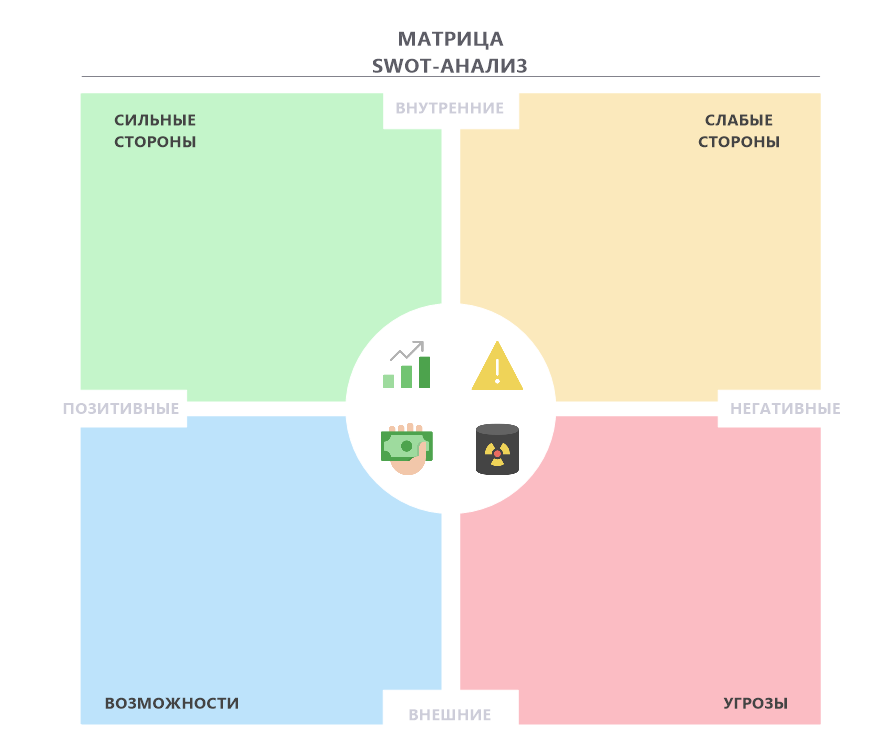
- Recycled SwimLine charts.

- Fading filters. They do not hide the rest of the map from your view, but only obscure it. This helps to stay in the context of the whole map, focusing only on the necessary information. Below is an example of how to reflect only “second priority tasks”:

- The calendar. Tasks will be reflected with reference to dates, it is convenient to comprehensively look at tasks with reference to periods and calculate the load for their execution.

- Priorities. All your favorite priority lists are now in Mind.

- Conditional auto formatting. Depending on the established rule, your elements may tint, strike out and change shape, this is useful for attracting attention when key events occur.
- Gantt chart. Those who tried to use it earlier in this product, probably resented by its angularity. Now it has become a better, almost full-featured copy of Ganta from MS Project.

- Work with MS SharePoint. For those who use MS SharePoint in their projects, an extension has finally appeared to work fully with it, versioning, editing, and other shared access.
Despite the soundness and popularity of the program, there are disadvantages in it, and for me it is only one - the “Browser”. Absolutely inconvenient for browsing the web pages, built into your mind map, offers to open all the links in it.

But to eliminate this sadness from your life there is an opportunity to open links in third-party browsers. See below:


How to apply mind maps in everyday life and project activities
Below I will give the main elements of the tool, often used in my work, and will give some tips.
- We use priorities.
To set priorities, there are separate markers for tasks in the toolbar on the “Task” tab; they do not fully reflect my needs. To work within the Eisenhower matrix, I use a double gradation - alphanumeric.

Alphanumeric designation can be added through the context menu of the task. The menu will highlight in the section "common icons" the most frequently used identifiers - my "favorite", according to Mind.

In addition to the above, I use the flag system: - I
 create task marks with a purple flag, which need to be done today with the involvement of other specialists / additional resources, with a
create task marks with a purple flag, which need to be done today with the involvement of other specialists / additional resources, with a  green flag - completely autonomous tasks that I can close myself, without engaging anyone,
green flag - completely autonomous tasks that I can close myself, without engaging anyone,  with black ones - that need to be done then.
with black ones - that need to be done then. Every day, I review all the flags for their relevance and transfer to the purple / green category.

Visually, the tasks are as follows:

- We use the timing of the tasks assigned to responsible.
At any element of the map, you can add the performance control feature - deadlines and those responsible. If the deadlines pass, and the task is incomplete, the task will be highlighted in red, and it will be easy to identify this failure. Their installation takes place all the same on the toolbar in the “Task” tab and through the context menu. You can set the periods of execution of tasks, and the progress of their execution. Resources will be reflected in the Gantt chart, taking into account the configured possible load. It looks like this (the task is automatically highlighted in red):

- We fill tasks with the essence.
You can add unique properties of different formats to tasks. It is these properties that can then be used in the calculation of formulas (more on that later), but I most often use such properties as the cost of production and labor costs of execution. After summing them up according to the areas of activity of my project, I see a comprehensive picture of the costa on the project.

- We use the formula
This is one of the most requested features. Allows you to perform calculations inside the map, the result to give exactly where you need it - in the pre-configured property of the problem. Simple mathematical formulas are used, the syntax is much simpler than in Excel. To specify the formula, a special field appears in the interface (see below).
Functionality allows you to consider the properties of the child tasks of the tasks of the "parents", thereby aggregating the values at the levels above. Example below:

- We use in the form of reports and presentations.
From Mind, it is possible to export information in different formats, and quite flexibly:
- presentation generation. The presentation generation wizard will offer possible slides himself, you will have the opportunity to change their list and the information displayed on them, to make a presentation.

- export through a specialized setting with a choice of parameters for export (which parameters to export, to what level of the map, to which format), as well as the creation of an interactive HTML5 map for display on devices without MindJet MindManager support.

- through the “Save As ...” interface, formats for information conversion will be offered, approximately the same as for export, only the result will be quite simple and will not meet your expectations.
- We use as a desktop, we attach all links and documents to the map.
As in any other drag'n'drop tool on the map, you can drag the necessary documents for quick access to them (OneNote is remembered). At the same time, you will be asked whether you want to use the link to navigate through it in the future or use the standalone option with the file attachment to the map. Pictures can be immediately inserted into the elements for greater clarity. You can add external links to your map, for example, to project resources or important articles on the Internet. This approach is convenient to use when planning long-term trips.

Links are opened in the built-in browser, which was mentioned earlier.
Another option for using mind maps is an interactive map of your project documents. When there are many projects, it is convenient to keep all the key links to project folders, estimates, graphs, reports and presentations, and other mind maps. Truly central to the project.
- Brainstorm.
The tool allows you to follow the basic three rules of brainstorming
- record all information, including delusional information, in order not to lose in the intellect map (see paragraph 1 above - visualization of chaos),
- to act as a facilitator, because there is a suitable template for brainstorming, and even if you have never performed it, you will succeed.

- limit brainstorming by time - there is a built-in timer (located to the right in the bottom panel). Like everything else in Mind, you can customize it too.

- We use filters by parameters.
You can choose from several types of displaying filtering results - “hiding” (for example, hiding all future tasks with a date greater than the current month), “displaying” (for example, displaying priority 1 only), and “extinction” (cited above in recent updates). .

Filtering is also applied by parameters, allowing you to filter by any established parameter type, style, text, and information by task, resource, and also select how the filter results are displayed.
I use customized and pre-stored filters by performance flags - “black flags” (tasks for the future) and “other flags” (tasks for today). This allows you to focus only on what is needed on a given day. An example is below.

- Keep in the cloud. Our project intelligence card is a key control element, so I advise you to keep it in the cloud (Yandex.disk, dropbox, or as an option in a private NAS) to access it from anywhere in the world from any device.
For each project, I recommend keeping a separate map and applying the recommendations given by me to each of them. And if you have a lot of projects, it is convenient to use the master map as an intermediate hub to navigate all other projects.
When to use this tool
My mind map is always open either on the second monitor or in the background. Its actualization does not require much time, if you work with it constantly.
There are periods of time when it needs to be reconsidered comprehensively and systematically - these are viewing platforms (see my article on time management ), in which we plan our activities for the day / week / month, record the completed activities (by moving to the “Completed” section, it is he who at the beginning of the article is highlighted in black). As a result, there should be no sections of the map in which there are no unfulfilled activities, and the main theme is not placed in the “Completed”. If this happens, the task is simply not placed in the “Completed” (you simply forgot) or not completed (you simply have not planned any further activities): you need to perform an activity / get a result that is not listed in the map, and it follows add and plan.
Your opinion?
Intellect cards can be used without IT tools. Their beautiful and visual visualization is used in scribing, allowing the visualizer to fully express itself and convey information to the listener. Such intelligence cards are less reliable for storage and less transportable, less scalable and changeable.

For me, the mind map is the basis of the working day, clearly showing the situation on the project. What about you? What tools do you use? Maybe trackers, task managers, mind maps, reminders, tudu lists, or other tools that make your work and life more effective? I invite you to share experiences.
By the way, the whole mechanics of thinking and human physiology is given in one good article, perhaps previously read by you. Tyts .
We also have vacancies.

